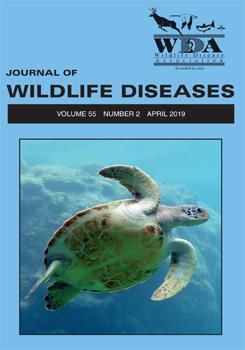Anticoagulant rodenticides (ARs) are widely used across North America to control rodent infestations but may cause direct mortality or nonlethal effects when secondarily consumed by raptors. Barn Owls (Tyto alba) are at high risk for secondary consumption because they specialize in rodent prey and often live in human-made structures. We investigated the exposure of Barn Owls in Kentucky, US, to ARs and to dicoumarol, an anticoagulant compound naturally found in certain moldy forages. We tested the liver tissue of 48 Barn Owl carcasses collected during 2012–16. We confirmed exposure to one or more ARs in 33% of the birds examined and detected dicoumarol in 13% of the samples. Rodenticides detected included brodifacoum, coumachlor, and bromadiolone. The prevalence of detected exposure to brodifacoum for after-hatch-year birds (65%) was significantly (P=0.012) higher than hatch-year birds (22%). Brodifacoum was the most commonly detected AR, found in 88% of AR-positive birds. The pesticide registration for this chemical in the US was canceled in 2015 for general consumer products, which likely resulted in a decreasing rate of detected exposure to brodifacoum during our study. We present these results as an example of secondary exposure rates during a period when a pesticide has been restricted and then removed from the consumer market.
How to translate text using browser tools
9 April 2019
Changes in Detected Anticoagulant Rodenticide Exposure in Barn Owls (Tyto alba) in Kentucky, USA, in 2012–16
Kate G. Slankard,
Cynthia L. Gaskill,
Lynne M. Cassone,
Cody M. Rhoden
ACCESS THE FULL ARTICLE

Journal of Wildlife Diseases
Vol. 55 • No. 2
April 2019
Vol. 55 • No. 2
April 2019
anticoagulant rodenticide
barn owl
brodifacoum
bromadiolone
dicoumarol
raptor
secondary exposure




